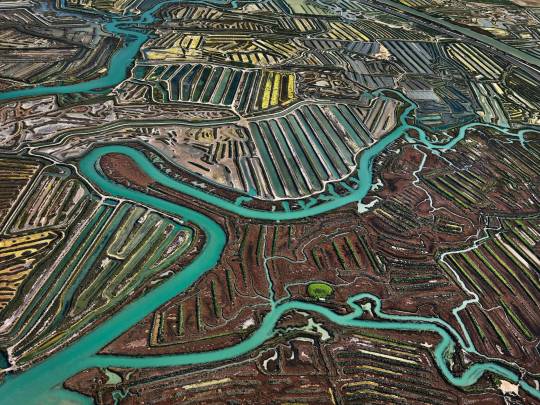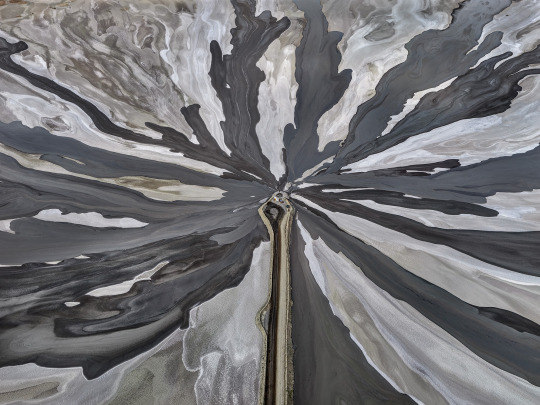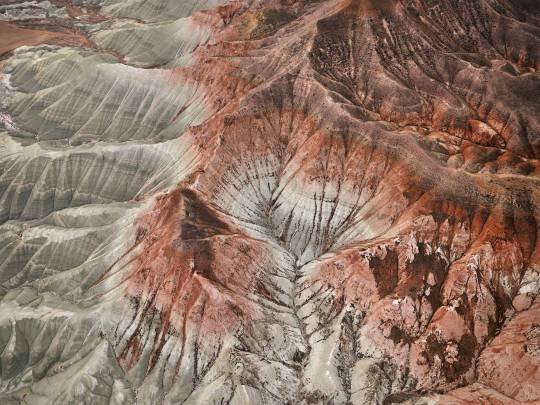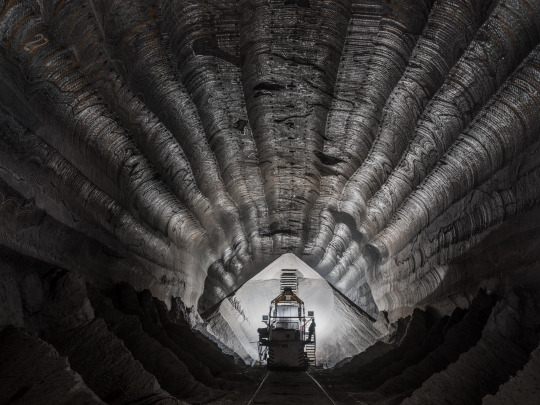#Natural Extract
Explore tagged Tumblr posts
Text
💧 Bilberry Extract dissolution experiment Witness the excellent water solubility of Bilberry Extract! Transparent dissolution, no residue, allowing the natural essence to be better absorbed💙👇
0 notes
Text
Buy Garlic Oleoresin in Bulk – Natural Extract for Flavoring & Health

Enhance your products with our top-quality Garlic Oleoresin, made from fresh garlic. Aarnav Global Exports offers bulk quantities, perfect for adding rich flavor to food, drinks, and even health products. With its strong aroma and health benefits, this versatile Garlic Oleoresin can elevate any recipe or formula. Count on us for pure, natural garlic extracts at great wholesale prices. Get in touch with us today to place your bulk order and make your products stand out!
0 notes
Text
Perilla Extract Market is In Trends by Increasing Health Benefits
Perilla extract is obtained from perilla frutescens plant and is rich in alpha-linolenic acid. It is widely used in food, cosmetics and healthcare industries due to its various health benefits. The extract helps enhance overall immunity, lowers risks of cancer, improves brain health and enhances cardiovascular functions. It is commonly added in foods for its flavouring and preservative properties. In the cosmetic industry, perilla extract is used in various anti-aging products owing to its antioxidant and skin rejuvenating properties. Global perilla extract market is projected to reach US$ 1.15 billion in 2023, and it is expected to reach US$ 1.84 billion by 2030, exhibiting a compound annual growth rate (CAGR) of 6.9% during the forecast period from 2023 to 2030.
Key Takeaways Key players: Key players operating in the perilla extract are Thales Group, Alstom, Huawei, Hitachi, Siemens, Cisco Systems, IBM, Microsoft, Intel, Qualcomm. Thales Group is one of the leading players with strong distribution network across major markets. Growing demand: Rising health awareness and increasing demand for herbal products without side effects have boosted the Perilla Extract Market Demand globally. The COVID-19 pandemic further improved the demand due to herbal extract's immunity boosting properties. Global expansion: Leading players are expanding their production facilities and distributing units in high growth markets like Asia Pacific and Latin America to tap the demand from food, cosmetics and pharmaceutical industries. Market Key Trends One of the major trends in the Perilla Extract Companies is the growing use in dietary supplements. With increasing preference for herbal supplements over synthetic products, manufacturers are developing various capsule and powder formulations containing perilla extracts. This is expected to significantly contribute to the global market growth over the forecast period.
Porter's Analysis Threat of new entrants: High requirement for R&D and distribution network makes entry difficult.
Bargaining power of buyers: Multiple buyers for Perilla extract reduces individual buyer's bargaining power.
Bargaining power of suppliers: Availability of alternative sources of Perilla extract gives suppliers moderate bargaining power.
Threat of new substitutes: Substitution threat is moderate as Perilla extract has certain bioactive compounds not found together in other plant extracts.
Competitive rivalry: Intense competition between existing players to gain higher market share. Geographical Regions North America currently holds the largest share in global Perilla extract market in terms of value as demand is driven by growing health conscious population. Asia Pacific represents the fastest growing regional market owing to rising awareness about health benefits of Perilla extract and increasing its use in functional foods and supplement applications in countries like China, Japan and South Korea.
Get more insights on Perilla Extract Market
Vaagisha brings over three years of expertise as a content editor in the market research domain. Originally a creative writer, she discovered her passion for editing, combining her flair for writing with a meticulous eye for detail. Her ability to craft and refine compelling content makes her an invaluable asset in delivering polished and engaging write-ups.
(LinkedIn: https://www.linkedin.com/in/vaagisha-singh-8080b91)

#Coherent Market Insights#Perilla Extract Market#Perilla Extract#Herbal Supplement#Perilla Oil#Natural Extract#Perilla Frutescens#Immune Support#Anti-Inflammatory#Antioxidant
0 notes
Text
there's something about the way people talk about john gaius (incl the way the author writes him) that is like. so absent of any connection to te ao māori that it's really discomforting. like even in posts that acknowledge him as not being white, they still talk about him like a white, american leftist guy in a way that makes it clear people just AREN'T perceiving him as a māori man from aotearoa.
and it's just really serves to hammer home how powerful and pervasive whiteness and american hegemony is. because TLT is probably the single most Kiwi series in years to explode on the global stage, and all the things i find fraught about it as a pākehā woman reading a series by a pākehā author are illegible to a greater fandom of americans discoursing about whether or not memes are a valid way of portraying queer love.
idk the part of my brain that lights up every time i see a capital Z printed somewhere because of the New Zealand Mentioned??? instinct will always be proud of these books and muir. but i find myself caught in this midpoint of excitement and validation over my culture finding a place on the global stage, frustration at how kiwi humour and means of conveying emotion is misinterpreted or declared facile by an international audience, frustrated also by how that international audience runs the characters in this book through a filter of american whiteness before it bothers to interpret them, and ESPECIALLY frustrated by how muir has done a pretty middling job of portraying te ao māori and the māoriness of her characters, but tht conversation doesn't circulate in the same way* because a big part of the audience doesn't even realise the conversation is there to be had.
which is not to say that muir has done a huge glaring racism that non-kiwis haven't noticed or anything, but rather that there are very definitely things that she has done well, things that she has done poorly, things that she didn't think about in the first book that she has tacked on or expanded upon in the later books, that are all worthy of discussion and critique that can't happen when the popular posts that float past my dash are about how this indigenous man is 'guy who won't shut up about having gone to oxford'
*to be clear here, i'm not saying these conversations have never happened, just that in terms of like, ambient posts that float round my very dykey dash, the discussions and meta that circulate on this the lesbian social media, are overwhelmingly stripped of any connection to aotearoa in general, let alone te ao māori in specific. and because of the nature of american internet hegemony this just,,,isn't noticed, because how does a fish know it's in the ocean u know? i have seen discussions along these lines come up, and it's there if i specifically go looking for it, but it's not present in the bulk of tlt content that has its own circulatory life and i jut find that grim and a part of why the fandom is difficult to engage with.
#tlt#the locked tomb#i don't really have an answer lmao this is more#an expression of frustration and discomfort#over the way posts about john gaius seem to have very little connection to the background muir actually gave him#like you cant describe him as an educated leftist bisexual man#without INCLUDING that he is māori#that has an impact! that has weight and importance!#that is a background to every decision he makes#from the meat wall to the nuke to his relationship with the earth#and it also has weight and importance in the decisions that muir makes in writing him#it is not a neutral decision that he's known as john gaius lmao#it's not a neutral decision that the empire is explicitly of roman/latin extraction#it's not even neutral that this is a book about necromancy#it's certainly not a neutral fucking decision that john was at one point a māori man living in the bush#when the nz govt decided to send cops in#like that is a thing that happens here! that is a reference to nz cultural and political events that informs john's character and actions#and with the nature of who john is in the story#informs the narrative as a whole#and i think the tiresome part of this experience is that#in general#americans are not well positioned to understand that something might be being written from outside their experience as a default#like obviously many many americans in online leftist & queer spaces are willing to learn and take on new information#but so much of the conversation starts from a place of having to explain that forests exist to fish
943 notes
·
View notes
Text
#for those wondering yes this post is influenced by hoyoverse but whatever. its genericized okay#i find it very interesting how split this poll is! I'm dividing gravity/time into 2 equal sections though because i honestly fucked up w tht#given 11-12 options the avg perfect split should be around 8 and 9% each.#didn't expect nature and electricity to be so popular#or vanilla extract tbh
522 notes
·
View notes
Text
Round 5 because my polls have gotten lots of love...
I want to give folks the chance to vote for their faves once again (or for the first time if you missed it the first go round)! As always, if you wanna give some love to a meme I didn't put on the poll, let me know and I might do another!
#sorry about your boyfriend#your boyfriend#ea nasir#color theory meme#spiders georg#none pizza with left beef#lord foog the 2st#out of touch thursday#neil banging out the tunes#neil the rat#gandalf big naturals#vanilla extract
596 notes
·
View notes
Text


Mountain cake with candied popcorn 🍿 vanilla poppy seed sponge, with lemon coconut cream and kiwi jelly 😋
#vegan#vegan food#veganfood#vegan eats#edible art#nature#cake#vegan cake#vanilla extract#vanilla cake#kiwi#coconut#poppy seed#lemon
18 notes
·
View notes
Text







𝒪𝒷𝓋𝒾𝑜𝓊𝓈𝓁𝓎 𝒹𝑜𝒸𝓉𝑜𝓇, 𝓎𝑜𝓊'𝓋𝑒 𝓃𝑒𝓋𝑒𝓇 𝒷𝑒𝑒𝓃 𝒶 𝓉𝒽𝒾𝓇𝓉𝑒𝑒𝓃 𝓎𝑒𝒶𝓇𝓈 𝑜𝓁𝒹 𝑔𝒾𝓇𝓁 ♡ 𓏲 𓂃⋆

#angel dust#girlblogging#lizzy grant#cherry blossom#lana del ray aka lizzy grant#lana del rey#lana is god#this is what makes us girls#tumblr girls#the virgin suicides#playground love#sofia coppola#lisbon sisters#cecilia lisbon#lisbon girls#nature#vanilla extract#777#vanilla girl#pure vanilla cookie
28 notes
·
View notes
Text

solution to every problem is everything shower
(in this pic my heart is really broke)
#skincare#skincare tips#curly hair#long hair#haircut#cosmetics#hairstyle#natural hair#short hair#shower#everything shower#self care#happy#love yourself#self love#free time#haircare#body care#face card#pretty face#face masks#my face#lip balm#body cream#body oil#vanilla extract
7 notes
·
View notes
Text
Ecologies of Imperialism in Algeria, by Brock Cutler, begins with an account of food poisoning in nineteenth-century French Algeria. A deep rural crisis of drought and famine in the late 1860s had reduced the amount of fuelwood coming into the city of Algiers, leading one baker to use construction debris shipped to the colony from Paris to fire his bread oven in early 1869. The lead paint on that metropolitan rubble, product of Baron Haussmann’s transformation of the French capital, became a toxic element in the bread that sickened settlers in the colony. The author [...] treats this small episode as a microcosm of the divides, the unruly circulations, and the nonhuman actants and processes that characterized the early decades of colonial rule in Algeria, which the French invaded in 1830.
These divisions and circulations include those between metropole and colony, between modern and not modern, between person and environment, between human and nonhuman, and across the colonial frontier with Tunisia. [...]
---
The first [of three major narrative veins in Cutler's study involves] [...] bread [...], the consumption of wheat grown on the Mediterranean plains of Algeria [...]. The toxic bread affair of 1869, however, was a reminder that the distance between metropole and colony was not so great. [...] The second vein examines the production of new ecosystem relations [...]. [T]he violence of decades of uneven conquest and the confiscation, appropriation, and enclosure of land and its reorientation toward regional and international [European] markets between 1830 and 1870 thoroughly destabilized rural Algerian life. This fragility turned lethal in the final years of the 1860s, when a series of environmental crises - locust plagues and drought - caused widespread famine and ultimately the deaths of up to eight hundred thousand Algerians. [...] The emptied land and cheap labor that were outcomes of the environmental crises enabled [France] to complete the capitalist transformation of rural Algeria [...]. Another outcome of the environmental crisis was an increase in the number of rural Algerians migrating to cities, where they were perceived as both a threat to public order and a reservoir of potential labor energy. [...]
[D]ivisionary logics, including the line between city and countryside and the modern gendered subject, were being performed, produced, and reproduced in the context of environmental crisis.
---
[Another] major element [in Cutler's scholarship] [...] is an exploration of the complex politics of policing French Algeria’s eastern border with Tunisia, in the era before French colonial rule began in the latter polity in 1881. [...] [T]his border, officially demarcated in 1846, was only integrated into local ecosystem relations over the course of subsequent decades. Repeated performance of sovereignty through patrols and taxation of pastoral communities that lived and worked in the frontier commons instantiated the border, but the border region remained resistant to the forms of modern statecraft, such as standardization, bureaucratization, and written transactions, that French authorities preferred. [...] [Cutler] draws on intentionally “mundane” examples to show how they were critical to the steady reproduction of a modern imperial border (p. 47). [...] [A specific] episode of transborder [dispute] [...] in 1869 [...] became a referndum within the settler community on the virtues of military rule and a reminder for that [European] community of [supposed] indigenous incompatability with modernity. [...]
[T]he various divisions illuminated by the story - between modern and not, between inside and outside, and between European and Algerian - were performances staged at various times and places, not eternal features of the society or landscape. The repetition of “divisionary logics,” in the author’s telling, were at the heart of French colonial modernity (p. 149). [...]
---
[T]horough reading of the French colonial archive, from official sources as well as memoirs, newspapers, and periodicals [...], [t]he first two narrative threads, on bread and disaster, demonstrate the significance of moments of crisis [...] in actually changing the course of history [...] [and] longer-term [...] ecological transformations. The other thread, however, examines how the mundane performance of modern sovereign power and its divisionary logics, over time, made real or even naturalized the new imperial frontier between Algeria and Tunisia. Both [...] society-wide crises or the steady performance of the mundane logics of power [...].
---
All text above by: Jackson Perry. "Review of Cutler, Brock. Ecologies of Imperialism in Algeria". H-Environment, H-Net Reviews. April 2024. Published online at: h-net.org/reviews/showrev.php?id=59842. [Text within brackets added by me for clarity. Bold emphasis and some paragraph breaks/contractions added by me.]
#on here ive previously shared and recommended article excerpts from cutler on borders frontiers and performance of power#he has cited some interesting examples of french official correspondence plotting to cut down forest and enclose land#while officials were explicitly discussing the importance of repetition and performance to slowly naturalize national borders#so that they could introduce idea of property and establish monopoly on force to justify their resource extraction#he cites many sources and if youre into frontiers borderlands etc check out his articles maybe#bunch of fascinating little anecdotes and stories about french officers and also local algerian disobedience and subversion#ruralurban divide and gender performance that subjects had to partake in to remain either legible or illegibile to french#ecology#abolition#landscape#multispecies#imperial#temporal#carceral geography#tidalectics#intimacies of four continents#ecologies#indigenous pedagogies#black methodologies#ottoman environment#SWANA environment
21 notes
·
View notes
Text
Chocolate and Peanut Butter Mousse Cake

I baked this beautiful Chocolate and Peanut Butter Mousse Cake to celebrate my friend Clo's Birthday, and she liked it heaps! It takes a bit of time --but what are Sundays for, eh?-- but it is delicious and indulgent, and worth the effort for someone special! Happy Sunday!
Ingredients (serves 8 to 10):
For the Dark Chocolate Sponge
180 grams/6 ounces good quality (at least 62%) dark chocolate
60 grams/2 ounces unsalted butter
1 ½ cup plain flour
1 teaspoon baking powder
1 tablespoon unsweetened cocoa powder
5 large eggs
75 grams/2.65 ounces unsalted butter, softened
¼ cup caster sugar
¼ cup dark muscavado sugar
For the Peanut Butter Mousse
1/2 cup double cream
½ cup natural peanut butter
1/3 cup caster sugar
For the Shiny Chocolate Icing
65 grams/2.30 ounces good quality (at least 62%) dark chocolate
1 tablespoon unsalted butter
1 tablespoon muscavado sugar
½ cup double cream
sugar pearls, sugar hearts, hundreds and thousands... (optional)
Butter and line a 20-centimetre/8” round cake tin; set aside.
In a medium bowl set over a small saucepan of simmering water, melt chocolate with butter, until smooth and shiny. Remove from the heat; set aside.
In a medium bowl, combine flour, baking powder and cocoa powder. Give a good stir; set aside.
Preheat oven to 165°C/330°F.
Separate 3 egg yolks from their whites. Set yolks aside in a small bowl.
In a medium bowl, beat egg whites with a pinch of salt, with an electric mixer until stiff peaks just start forming; set aside.
In a larger bowl, cream butter with caster sugar and muscavado sugar, until light, pale brown and fluffy. Whisk in reserved egg yolks and two whole eggs, one at a time, whisking well after each addition. If necessary, you can add one or two tablespoons of the flour mixture to prevent splitting. Stir in Vanilla Extract. Then, stir in cooled melted chocolate until well-blended. Gradually stir in flour mixture until just blended. Finally, gently fold in egg whites, making sure no white streak remains.
Spoon batter into prepared cake tin, and place in the middle of the hot oven.
Bake, at 165°C/°F, 30 to 35 minutes, or until a toothpick inserted in the middle of the sponge comes out clean. Remove from the oven, and let cool, 5 minutes, before removing from the tin. Let chocolate sponge cool completely.
Once the sponge have cooled, with an electric mixer, beat double cream, gradually increasing speed to high speed until stiff peaks form.
In a larger bowl, stir peanut butter and sugar energetically until well-blended. Gently fold in whipped cream, until completely combined and no white streak remain. Set aside.
Then, start assembling the cake. Place one of the chocolate sponge bottom onto serving plate. Generously spread Peanut Butter Mousse in an even layer, all over the sponge.
Gently but firmly sit chocolate sponge top onto of the Peanut Butter Mousse. Set aside.
In a medium bowl set over a small saucepan of simmering water, melt chocolate with butter, until smooth and shiny. Stir in muscavado sugar, until completely dissolved. Then stir in double cream, until completely blended and silky. Gently pour chocolate icing onto the cake, easing it onto the edges with a spatula. Sprinkle liberally with sugar pearls and hearts and hundreds and thousands, if desired.
Serve Chocolate and Peanut Butter Mousse Cake with chilled Champagne!
#Recipe#Food#Chocolate and Peanut Butter Mousse Cake#Chocolate and Peanut Butter Mousse Cake recipe#Chocolate Cake#Chocolate Cake recipe#Cake#Cake recipe#Cake Pavlova and Pudding#Dark Chocolate#Chocolate#Butter#Sugar#Eggs#Flour#Cocoa Powder#Baking Powder#Vanilla Extract#Pure Vanilla Extract#Peanut Butter#Natural Peanut Butter#Double Cream#Whipped Cream#Muscavado Sugar#Birthday Cake#Birthday Cake recipe#Celebratory Food#Birthday#Friends#Clo
6 notes
·
View notes
Text
Incredibly funny when two of your background ensemble cast OCs decide to let you know that they are somewhat surprisingly quite heterosexual, and in fact have staggeringly intense chemistry with one another - in what is an entirely non-toxic but slightly complicated pining-heavy mentor/mentee fem!dom H/C thing about to happen if you would just tilt the POV character's attention slightly to the left.
#Like I did not expect this#But - He's twice her size but she's a tough ass bitch so she dragged him to the extraction even though his skull was cracked open#Turned into his “Please. Can you tell me - my TL? Is she okay?”#And “Good job not dying kid - that would've fucked her up - you know she's only tough on you because she thinks you have real potential”#And her “I know you can't tell me until after the statements get taken fuck just - Leo. The big idiot farm boy. Alive?”#And suddenly it turned out he's Down So Bad for her and how she's always pushing him to be better and giving him (overtly mean) attention#And actually he has an entire journal of sweet love letters about how cool she is that he never sent and fantasies#and diary entries about all the times she told him she was waiting to be impressed and how much he liked it when she cursed him out#and her being very much Refusing To Acknowledge She Thinks He's Hot And Sweet He's Over Ten Years Younger Than Her And IsHer Subordinate FF#and "Oh Fuck Why Does This Feel So Natural To Pull His Hair And Say Mean Things When He Gets On His Knees For Me Why Is He Smiling WTFF#thoughts on writing#gotta love those side OCs never know what they're going to get up to
3 notes
·
View notes
Text
youtube
#i really like helium recovery systems because they save so much money & reduce reliance on natural gas extraction#but they are SO fucking loud#nmr
3 notes
·
View notes
Text
The Connection Between Sleep and Weight Loss

The Science of Sleep and Weight Management
Hormonal Regulation
Sleep significantly influences two crucial hunger-regulating hormones:
Leptin (the satiety hormone):
Secreted by fat cells to signal fullness
Sleep deprivation reduces leptin levels by up to 15%
Lower leptin levels increase appetite and cravings
Ghrelin (the hunger hormone):
Produced in the stomach to stimulate appetite
Insufficient sleep increases ghrelin production
Higher ghrelin levels lead to increased hunger and caloric intake
Metabolic Effects
Poor sleep impacts your metabolism through several mechanisms:
Insulin Sensitivity
Sleep loss reduces insulin sensitivity by 30%
Decreased insulin sensitivity promotes fat storage
Blood sugar regulation becomes impaired
Cortisol Regulation
Sleep deprivation elevates cortisol (stress hormone)
High cortisol promotes abdominal fat storage
Evening cortisol spikes interfere with sleep quality
Energy Expenditure
Lack of sleep reduces resting metabolic rate
Physical activity levels typically decrease
Recovery from exercise is compromised
Sleep’s Impact on Weight-Related Behaviors
Decision Making and Food Choices
Research shows sleep-deprived individuals:
Consume an average of 385 extra calories daily
Show increased activation in brain reward centers when viewing high-calorie foods
Make poorer food choices, favoring carbohydrate-rich and fatty foods
Exercise Performance
Inadequate sleep affects physical activity by:
Reducing exercise motivation
Decreasing endurance capacity
Impairing muscle recovery
Increasing perceived exertion during workouts
Frequently Asked Questions (FAQs)
1. How much sleep do I need to support weight loss?
Most adults require 7–9 hours of quality sleep per night. Studies show individuals getting less than 6 hours of sleep have a 55% higher risk of obesity.
2. Does the quality of sleep matter as much as quantity?
Yes, sleep quality is equally important. Deep sleep stages are crucial for hormonal regulation and metabolism. Poor quality sleep, even if long enough, can negatively impact weight management.
3. Can sleep debt affect my weight loss efforts?
Yes, accumulated sleep debt can disrupt metabolic processes and hormone levels. Even short-term sleep debt can increase appetite and reduce insulin sensitivity.
4. What’s the best bedroom temperature for quality sleep?
The optimal bedroom temperature for sleep is between 65–68°F (18–20°C). This range supports both quality sleep and mild calorie burning through brown fat activation.
5. How does shift work affect weight management?
Shift work can disrupt circadian rhythms, leading to metabolic changes and weight gain. People working night shifts often struggle more with weight management due to disrupted sleep-wake cycles.
6. Can certain foods improve sleep quality?
Foods rich in tryptophan, magnesium, and complex carbohydrates can support better sleep. Examples include:
Turkey
Bananas
Almonds
Whole grain oats
Tart cherries
GET Night Mega Burner
7. How long before bed should I stop eating?
Ideally, stop eating 2–3 hours before bedtime. This allows proper digestion and helps maintain stable blood sugar levels during sleep.
8. Does sleeping right after exercise affect weight loss?
While rest after exercise is important, try to maintain at least a 1-hour gap between intense exercise and bedtime. This allows your body temperature and hormone levels to normalize.
9. Can sleep medications impact weight loss?
Some sleep medications can affect metabolism and appetite. It’s better to focus on natural sleep improvement strategies unless medication is prescribed by a healthcare provider.
10. How does stress affect sleep and weight loss?
Chronic stress can:
Disrupt sleep patterns
Increase cortisol levels
Promote emotional eating
Interfere with weight loss efforts
11. What’s the relationship between sleep apnea and weight?
Sleep apnea and weight form a vicious cycle:
Excess weight increases sleep apnea risk
Sleep apnea disrupts quality sleep
Poor sleep makes weight loss more difficult
Treatment of sleep apnea often improves weight loss success
Conclusion
The connection between sleep and weight loss is more significant than many realize. Quality sleep serves as a cornerstone of successful weight management by regulating hormones, metabolism, and behavior. Prioritizing good sleep hygiene alongside proper nutrition and exercise creates a powerful foundation for achieving and maintaining a healthy weight.
GET Night Mega Burner
Remember that sustainable weight loss requires a holistic approach. While sleep alone won’t guarantee weight loss, neglecting sleep can significantly hinder your weight loss efforts. Focus on establishing consistent sleep patterns and creating an environment conducive to quality rest to support your weight management journey.
#nutrition#weight loss#Night Mega Burner#Weight Loss Supplements#Fat Burning Supplements#Overnight Fat Burners#Appetite Suppressants#Nighttime Weight Loss#Sleep and Weight Loss#Metabolism Boosters#Natural Weight Loss Aids#Fat Loss During Sleep#Caffeine-Free Weight Loss Supplements#Herbal Weight Loss Products#L-Carnitine for Weight Loss#Garcinia Cambogia for Weight Loss#Choline L-Bitartrate Benefits#Inositol for Weight Management#Inulin as an Appetite Suppressant#Bitter Orange Extract for Fat Burning
3 notes
·
View notes
Text
Round four...
I'm on a quest to find tumblr's finest memes. Vote for your favorite memes and help them move on to the next round! If you don't see your favorite here, let me know and I'll put it on a future poll!
The people have spoken! Goncharov and Miette the cat have both had a huge amount of votes on the last few polls so they have been declared winners, and removed as options. I want to see what other memes y'all love!
#no one expects the spanish inquisition#spanish inquisition#gougar#gouger#sorry about your boyfriend#your boyfriend#time for crab#moon moon#spiders georg#gandalf big naturals#lotr#none pizza with left beef#ides of march#julius caesar#vanilla extract#tumblr memes
219 notes
·
View notes
Text










Edward Burtynsky, "Extraction/Abstraction"
“I have spent over 40 years bearing witness to the ways in which modern civilization has dramatically transformed our planet. At this time, the awareness of these issues presented by my large format images has never felt more urgent. I hope the exhibition experience will continue to provide inflection points for diverse conversations on these issues and move us all to a place of positive action.”
_Edward Burtynsky
Courtesy: Saatchi Gallery
Saatchi Gallery acknowledge the support of the Canada Council for the Arts
#art#photography#nature rights#extraction#pollution#edward burtynsky#earth#no planet b#saatchi gallery#contamination#human footprint#industrialization#acid rain
8 notes
·
View notes